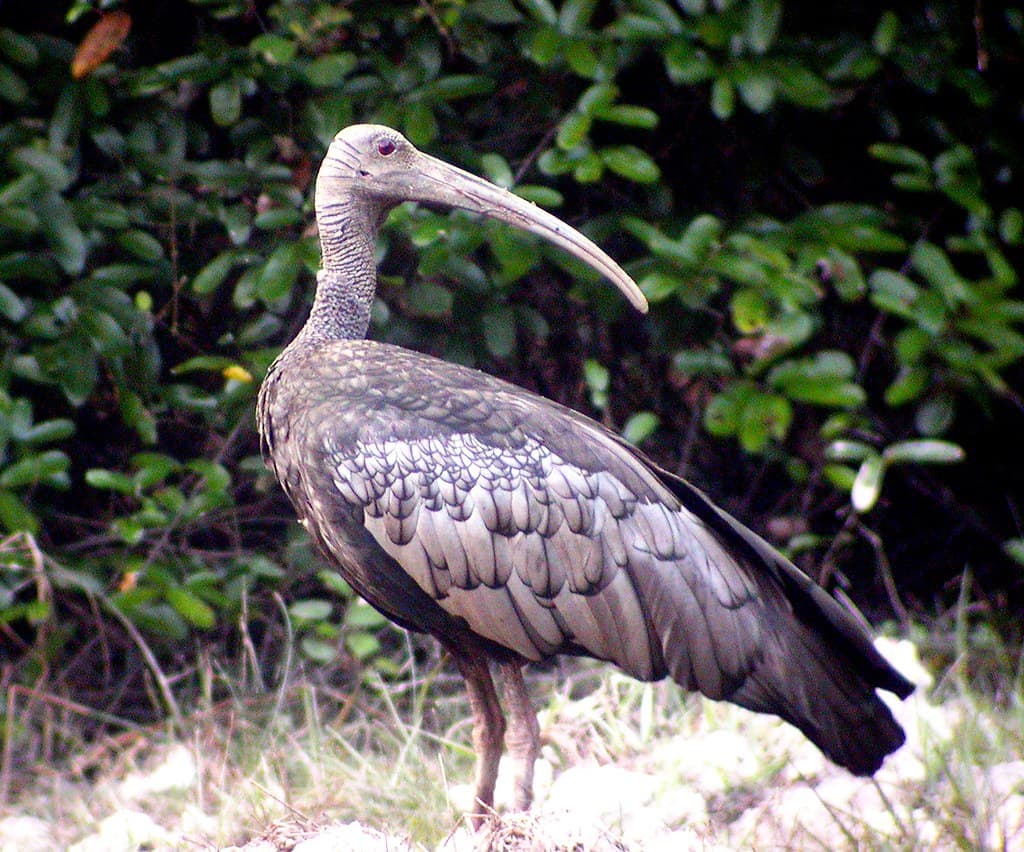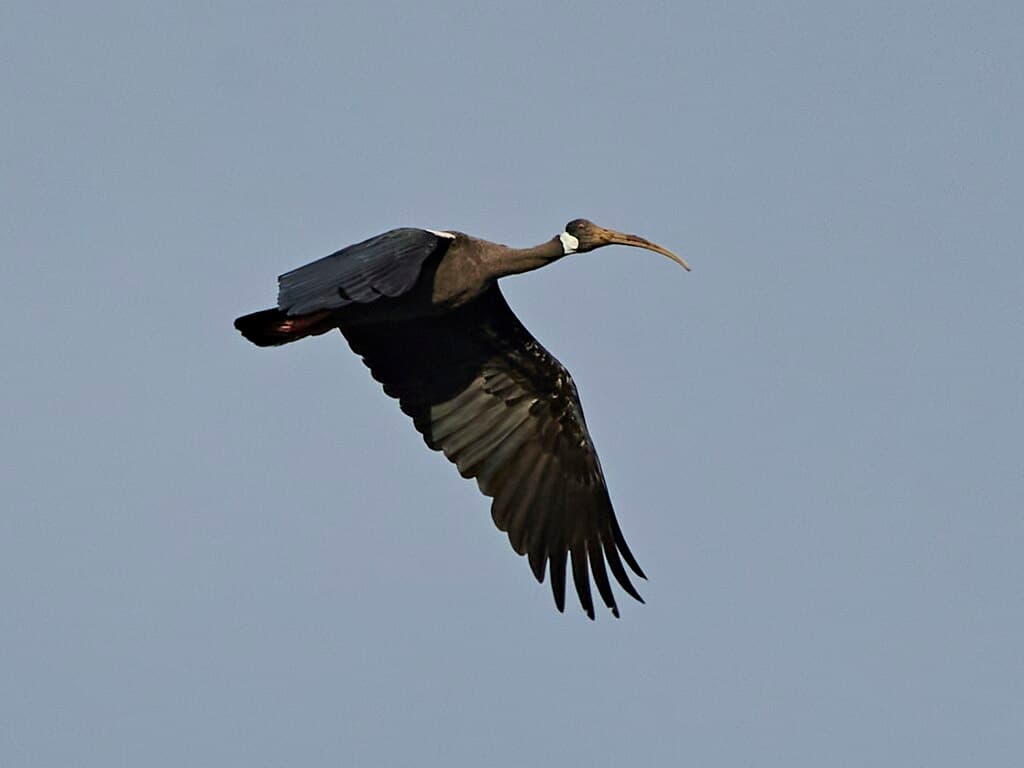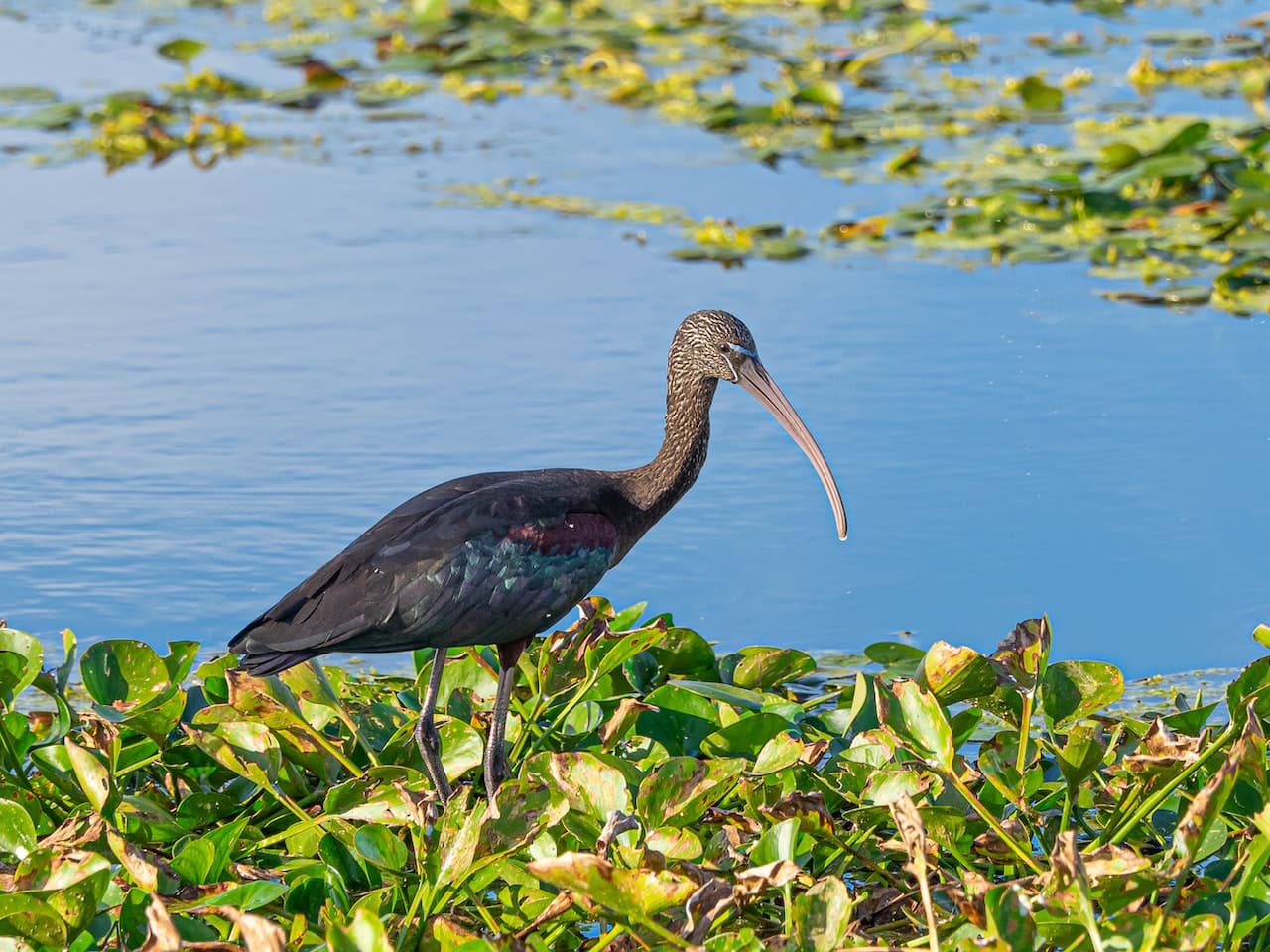Cambodia is home to 4 out of 29 ibis species in the world, and we are working really hard to protect them. Ibis is a wading bird species with long legs that inhabit forests, plains, and wetlands. Some ibis birds are very beautiful when it comes to their appearance and coloration. Below are the 4 ibis species in Cambodia, let me know if you know any of them.
Black-Headed Ibis (ត្រយ៉ងខ្លួនស)

Black-headed ibises are large birds that stand 65 to 76 centimeters tall. You can easily recognize this bird by its white plumage with black neck and head, and its black sickle-shaped beak. A black-headed ibis tail has light gray ornamental feathers that turn jet black during the breeding season. At the same time, the bare patches under its wings also turn blood red. They build nests from grass, sticks, and threads in heronry colonies near wetlands.
This ibis species has a wide range across South Asia and Southeast Asia, living in both manmade and natural habitats. They inhabit freshly plough crop fields, freshwater and saltwater marshes, irrigation canals, lakes, ponds, rice fields, reservoirs riversides, and urban lakes. Black-headed ibises like foraging in agricultural fields where food is plenty for them. Their usual menu consists of crustaceans, fish, frogs, insects, and worms that they catch by probing their bills in the mud.
The black-headed ibises are now considered Near Threatened due to the dumping of solid waste, fishing, and the growth of weeds. Along with that, collisions with transmission lines, grazers, and stray dogs are also major threats to their population as well. Hence, their number is not doing well at all.
Giant Ibis (ត្រយ៉ងយក្ស)

Here you are looking at the national bird of Cambodia, the giant ibis. A giant ibis is the largest extant ibis species that grows up to 102 to 106 centimeters. Adult giant ibises have dark grayish-brown plumage with a naked grayish head and upper neck. They have yellowish brow beaks, dark red eyes, and orange legs. The distinctive feature is the dark bands across the back of the head and shoulder area.
This ibis species is common in some countries in Southeast Asia, especially Cambodia, Laos, Thailand, and Vietnam. The giant ibis is a lowland bird that lives in flood plains, lakes, marshes, semi-open forests, swamps, and wide rivers. These birds also frequent ponds, pools, and seasonal water meadows in dense deciduous forests as well. Within their habitats, they feed on aquatic invertebrates, crustaceans, eels, giant earthworms, and small amphibians and reptiles. When abundant, they also feed on insects such as cicadas and locusts as well as seeds.
The giant ibis is now Critically Endangered on the IUCN Red List due to many threats. Some of the major ones are deforestation for human settlement, drainage of wetlands for cultivation, and epidemic clear-cutting of forests. Human disturbance and hunting also play a part, but at least we are working to protect these national birds.
Glossy Ibis (ត្រយ៉ងខ្លួនរលោង)

A glossy ibis is a medium-sized wading bird with a compact body, long neck, long curved bill, and long legs. It grows from 48 to 66 centimeters, and its dark plumage of maroon and metallic green wing coverts is so beautiful. Its bill is brownish and its facial skin is dark while the legs are red brown. Juveniles and non-breeding birds have duller bodies. Glossy ibises live in small flocks that nest and forage together all year long.
The glossy ibis is the most widespread ibis species with a wide range across Africa, Asia, Australia, and Europe. Glossy ibises inhabit almost any wetland environment with exposed mud or shallow water as well as farm fields or open areas. Other habitats are estuaries, flooded fields, mangroves, and marshes.
When feeding, they lower their bill into the mud, soil, or water to feel for prey. The diet of glossy ibises is aquatic beetles, crayfish, crickets, crustaceans, damselflies, dragonflies, flies, grasshoppers, leeches, and mollusks. Occasionally, they also feed on amphibians, fish, lizards, nestling birds, and small snakes.
White-Shouldered Ibis (ត្រយ៉ងចំកំកស)

Adults of this species are 60 to 85 centimeters all, having brownish-black plumage with glossy blue-black wings and tails. The distinctive characteristic of the white-shouldered ibises is definitely the neck collar that is bluish-white or white in color. This white neck collar is very visible on the upper part of the neck and chin which appears as white shoulders in flight.
The white-shouldered ibises are Southeast Asian species, ranging from Cambodia, Laos, Malaysia, Myanmar, Thailand, and Vietnam to China. A majority of their population is in Cambodia, over 80-85% to be exact. Their habitats are dry dipterocarp forests, fallow rice fields, forested lakesides, river margins, sandbanks, sandy islands, shrubby grasslands, etc. In those areas, they feed on amphibians, beetle, insects, large worms, leeches, mole crickets, and other small invertebrates.
This ibis species is one of the most threatened birds in Southeast Asia, and habitat destruction is the main threat. The habitat conversion like wetland drainage for agricultural developments such as infrastructural developments, plantations, and unsustainable rural development affects their home. Not to mention deforestation and hunting, their population is not doing well at all.
Related Post: Hornbill Species In Cambodia
